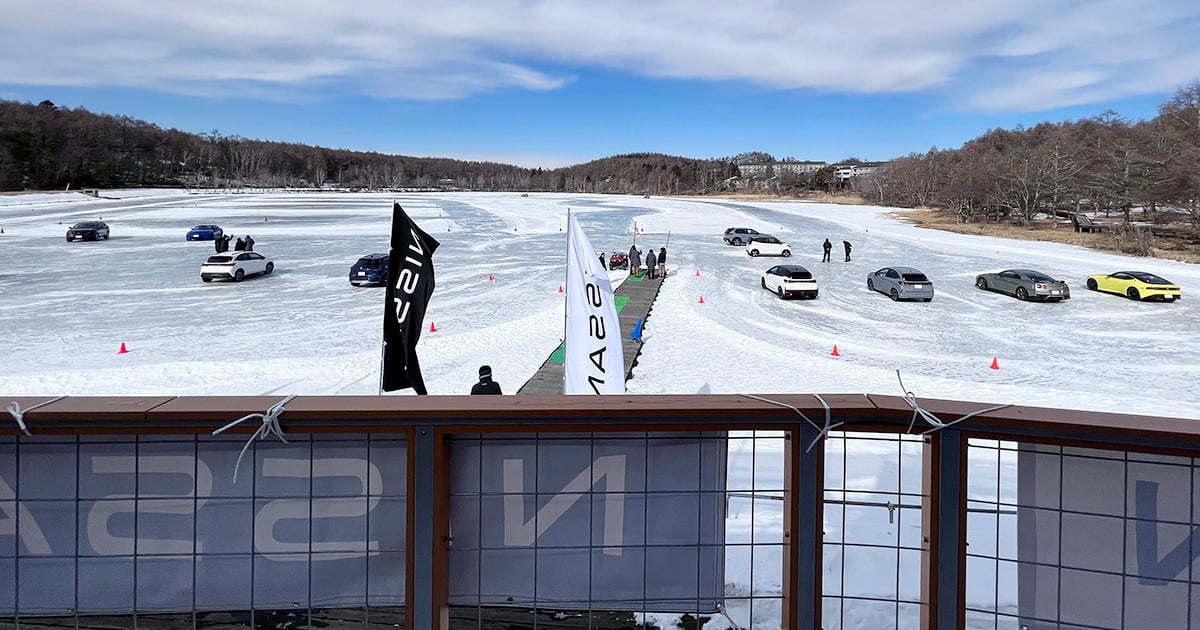
TATESHINA, Japan — When cruising along at 40 mph on a sheet of super-slick ice, it pays to have an ultraresponsive vehicle stability system that won’t skate you right off the road.
Nissan’s new e-4orce all-wheel-drive technology, offered in the new Ariya electric crossover, keeps the driver in control, even in situations like this, thanks to its sophisticated software and motor setup.
On a recent test of the system on a frozen lake, high in the snow-draped mountains of central Japan, an e-4orce-equipped Ariya sprung quickly off the start with zero slippage, braked with ease in an unwavering beeline and proved nearly impossible to fishtail on an icy skid pad.
The all-electric awd system debuted last summer and is so far deployed in only two nameplates — the Ariya and the Japan-market X-Trail. But expect to see more of it as Nissan Motor Co. positions e-4orce as one of the killer apps in its coming wave of electrified vehicles.
The technology is tailored to make the most of electric-motor mobility and can be deployed in Nissan’s all-electric vehicles or its e-Power hybrid models. In these powertrains, only electric motors turn the wheels, allowing for ultraquick, super-accurate tweaking of torque.
In Nissan’s previous-generation Intelligent 4×4 setup, chassis control and drive control were executed through different electronic control units in parallel channels.
The new e-4orce system, by contrast, combines all computations in one electronic control unit for faster reaction and more precise power adjustment. It then channels the signal to two sets of electric motors — one for the front axle, the other for the rear. The setup allows for a wide band of power splitting, delivering up to 100 percent to the front axle and up to 100 percent to the rear. The system then blends that power distribution with independent braking control on the right and left side.
The result, Nissan says, is better grip, tighter curve tracing and smoother braking. The system works precisely on ice and is equally effective on winding country roads or rain-drenched city streets.
The Japan-market X-Trail, sold as the Rogue in the U.S., was the first vehicle to get the e-4orce setup in July. On the X-Trail, it is available only in the e-Power series hybrid versions, which use a gasoline engine as a generator to create the electricity that powers the motors.
While there are no plans to deploy an e-Power version of the Rogue to the U.S. anytime soon, Nissan says it will introduce e-Power with e-4orce in the X-Trail in Europe.
Engineers say the e-4orce technology wasn’t ready in time for the U.S. launch of the redesigned Rogue. At the same time, Nissan had doubts about the acceptance of e-Power in the U.S.
But Masakazu Nakamura, chief vehicle engineer of the nameplate, said Nissan is now studying the possibility of introducing the technology to the U.S. The e-Power X-Trail gets a high-power variable compression, turbocharged 1.5-liter engine that can recharge the battery at a quicker clip, helping the electric drive system cope with the faster speeds and demanding acceleration of European roads.
That more powerful e-Power engine may also translate into a better fit for the U.S., especially if Nissan can market e-4orce as a unique safety and performance technology.
Engineers say e-4orce is especially well-suited for heavier vehicles such as crossovers, which can be sluggish and harder to control. The Ariya, for instance, weighs around 2 tons.
That’s one reason, on top of the added cost, that Nissan has not yet rolled out e-4orce on smaller e-Power vehicles in Japan, such as the Kicks compact crossover or Note hatchback.
In the U.S., e-4orce is listed as available on the 63-kilowatt-hour battery version of the Ariya starting at $47,190, before shipping and handling, while the 87-kWh version tops out at $60,190.
And that’s if a shopper can get their hands on one — Nissan stopped taking orders for the Ariya in the U.S. last May. U.S. deliveries of the front-wheel-drive Ariya began in December. Through the end of 2022, Nissan delivered only 201 units of its flagship EV.
The company began delivering the e-4orce-equipped Ariya to customers in Japan in December. A Nissan spokesperson said the e-4orce variant is expected to reach U.S. customers in early 2023.